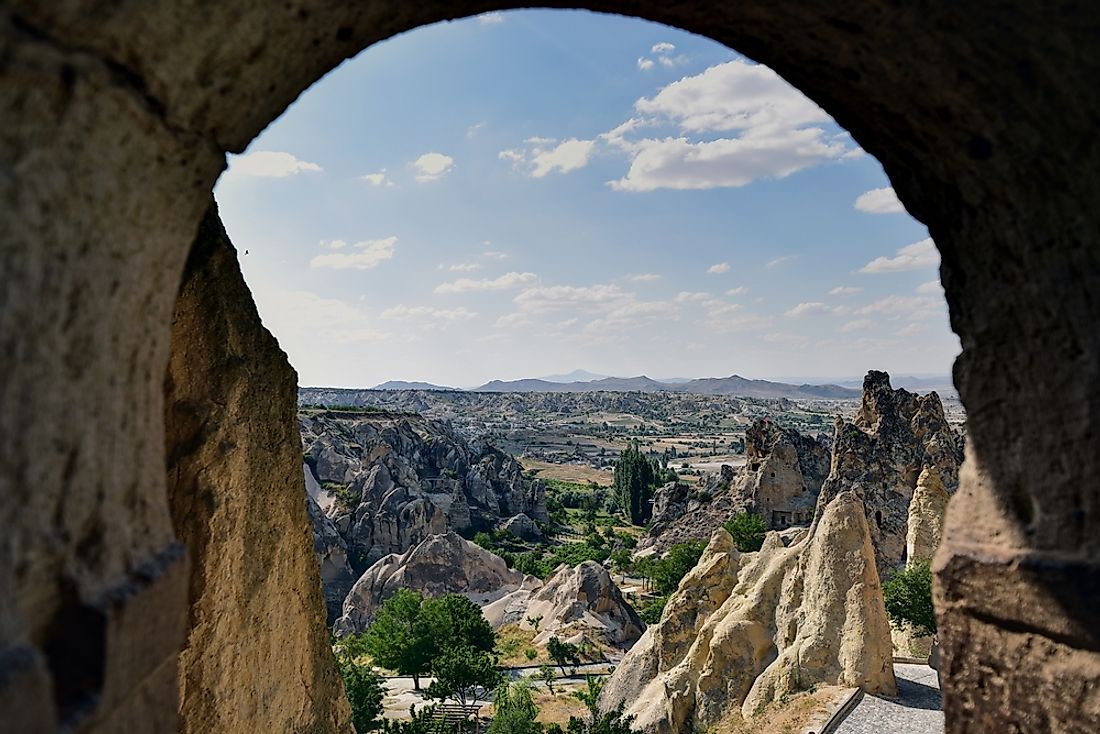Goreme Open Air Museum - Unique Places Around the World

5. Description
The Goreme Open Air museum is part of a vast and unique landscape that consists of mountain ridges, valleys and pinnacles called ‘fairy chimneys’. The topography is made up of a kind of soft rock called ‘tufa’, which can be easily broken through and carved out to make dwellings. The Goreme Air Museum itself is a huge complex of rock-cut monasteries that were operative between the 9th and 12th centuries. The churches and monasteries are decorated with frescoes that represent rare Byzantine art of the post-iconoclastic period. Despite having been created more than a thousand years ago, the colors of the frescoes have retained their original freshness. The density of the rock-cut cells and the extent and sophistication of the underground complexes make it the world’s largest and most striking example of organized cave habitation.
4. Location
The Goreme valley is situated in the region of Cappadocia, which hosts a breathtaking landscape sculpted entirely by erosion. Cappadocia is famous for its troglodyte dwellings and extensive underground urban complexes. These complexes contain the remains of a conventional human habitat from the Bronze Age onwards. Cappadocia is located on the central Anatolian plateau, which sits on a volcanic landscape. Goreme National Park and the Rock sites of Cappadocia span across three above-ground cities and two subterranean towns apart from many other sites, which have their own geological and historic significance. The region is bounded by a range of extinct volcanoes on the south and east with Hasan Dag (3253 m) at one end and Erciyes Dag (3916 m) at the other.
3. Formation
Turkey and neighboring Caucasian countries sit on some of the most restless tectonic plates on our planet. The geography has been repeatedly shaken by earthquakes. In the closing phases of the Mesozoic Era around 66 million years ago, the northern African plate subducted beneath the Eurasian plate to form the Taurus Mountains in Turkey. The subsurface magma also climbed up to create a range of range of volcanoes parallel to the mountains. The volcanoes, today called Mounts Erciyes, Hasan and Melendiz repeatedly erupted over millions of years and the lava flows hardened into layers of hard and soft rocks including ash, basalt, and sandstone. Over thousands of years the ash solidified into a topography consisting of a rock called ‘tufa’. Heating allowed tufa to expand and low temperatures made them fragile, contributing to the singular landscape of Cappadocia.
2. Production
It is thought that monasticism in Cappadocia dates back to the 4th century. Balileios the Great, Bishop of Kayseri, prompted early Christian communities to inhabit the caves hewed out of the rock. They took refuge in the troglodyte villages and towns like Derinkuyu or Kaymakli during the Arab invasions. In the iconoclastic period (725-842 AD), the churches and monasteries were minimally decorated with religious symbols. After 842 however, additional rupestral churches were constructed and richly ornamented with a plethora of religious and figurative painting and sculptures. Asia Minor was the cradle of Christianity and the Churches of the Goreme represent some of the oldest churches in the world, even though most were built in 9th, 10th and 11th centuries. Goreme Open Air-Museum and the Rock Sites of Cappadocia are on the UNESCO World Heritage Site list.
1. Uses
Early human settlers soon discovered that the tufa was soft and could be hollowed out. They made cave dwellings with multiple rooms and windows. They also found that the earth was soft as well and began to dig. They went deeper and deeper and fanned out, carving tunnels, rooms and storage chambers. The result was a subterranean network of fully-functional cities. People of Anatolia were always in the political crossfire between the East and West. The underground settlements proved to be useful hideouts at times of war. The houses on land were connected to the underground spaces through staircases and meandering tunnels; people could switch to subterranean living at short notice. Chimneys and ventilation shafts were dug up to 80 meters deep in various sections of the underground cities. Chimneys allowed rainwater harvesting and the people tapped into underground streams. With its unique insulation properties, the tufa stone kept the communities comfortable through the summer and winter months. Subterranean Cappadocia had wine houses, community kitchens and places for social gatherings. Many rooms and chambers in these cities had locking stones, which allowed the doors to be opened and closed only from the inside.







